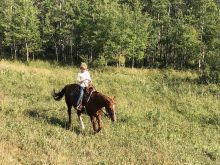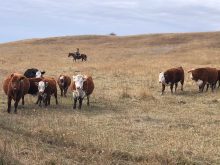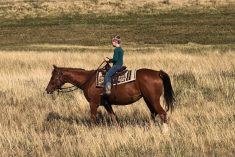With many crops left out in the field until spring, this fall is not how one would have planned, if you’d had a choice. What can you do to reduce your risk of losing more money if your grains are low quality and tough or damp or still out in the field?
First, get an accurate inventory of how much and what quality grain you have in your bins. Knowing the moisture of all your grain is going to drive your decision making when it comes to deciding how soon to sell based on storage risks and potential grain spoilage.
Read Also

Gentle treatments for pain in the neck
Heading toward year-end, people unknowingly tense up against the cold and busyness, causing neck pain that can often be treated with appropriate support and gentle mobility, athletic therapist Kathlyn Hossack says.
Next, review your risk management plan (your insurance coverage) to see if you may trigger a payout. Then you can do some gross income calculations to see how the year will look. This will help you make better decisions regarding expenditures or capital purchases.
If you still have crop in the field and you only have provincial crop insurance coverage, there are a couple of things to consider. With your accurate inventory of grain in storage, you’ll know whether or not you are already beyond your insurance coverage bushel threshold.
If you are above your coverage threshold, your focus is going to be on getting as much of the crop out in the field and into your bins. That crop is unprotected revenue.
If you have the facilities to handle or dry the tough grain still in the field you can safely manage the storage and spoilage risk long enough to be able to make some marketing decisions about how soon to sell to create cashflow and reduce your overall risk of revenue loss.
Let’s say that you’re below your insurance coverage bushel threshold. If you were unable to harvest any more grain you would receive a payout from crop insurance.
Let’s also assume that you have no more aeration bins left and no drying facilities on your farm to handle tough or damp grains. What can you do to reduce your overall risks?
Every bushel that you harvest may be losing you money in this scenario.
First, if you harvest enough bushels to take you beyond your coverage thresholds, you will no longer be eligible for a crop insurance production loss payment.
If the grain quality is feed or sample or worse, your selling price plus the grade adjustment factor that you may receive from crop insurance will likely end up being less than your original crop coverage value.
Do you combine the grain out in the field only to end up netting less that you would if you’d left it in the field and had crop insurance pay you for the loss?
Assess the quality and value of the grain in the field, then talk to crop insurance to determine the value they’re going to use for grade adjustments on your claim. Do the math to see which scenario will pay you the most.
If crop insurance determines through its price averaging formula that feed wheat is worth $5/bu and you sell your feed wheat at the current market value of $4.75/bu, you will end up under-compensated for the price difference.
Global Ag Risk
How would a Global Ag revenue insurance product on your farm impact your decision making this year?
Start with your inventory, then n forecast your revenues and see if you are in a potential claims position. You will have already filed this information with your post-harvest report for Global Ag, so just review that report.
If you are not in a claim position, try to harvest as much grain as possible. Any extra bushels harvested are extra revenue for your bottom line.
If you are in a potential claim position, you still want to harvest as much grain as possible, in hopes that you will derive more revenue from the harvested grain than your revenue coverage.
With revenue insurance, if you should run into quality problems with your grain in the bin such as heating, the insurance will cover you for that loss if you are in a claim position, but only up until March 31 when they do the final reconciliation of your file.
















